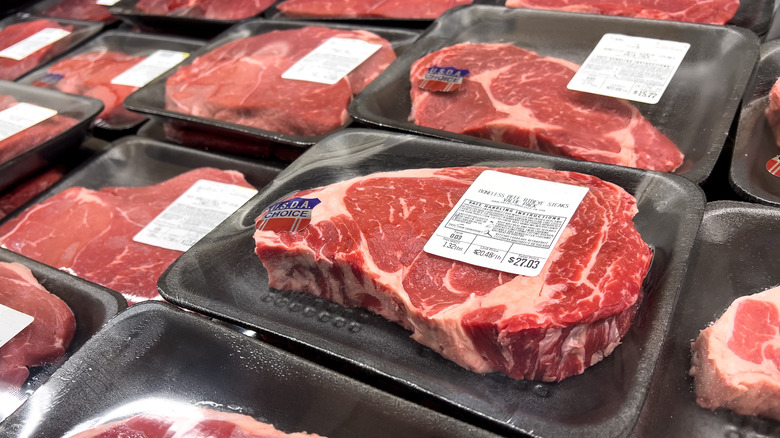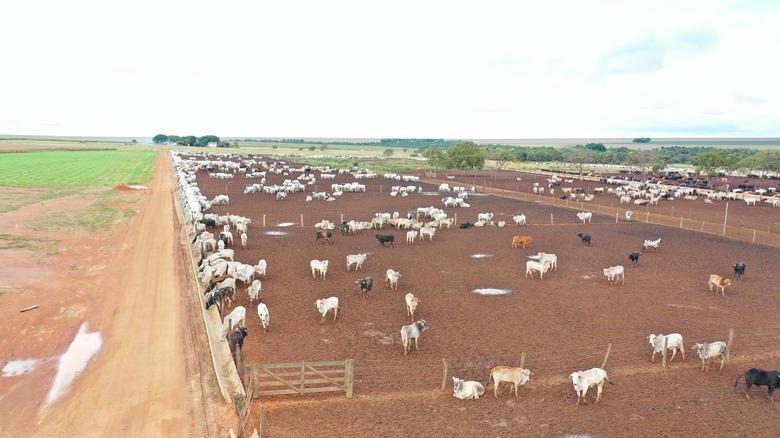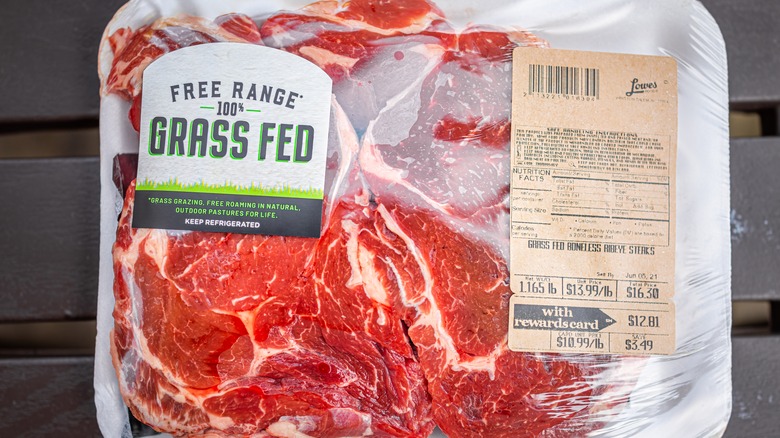What Is 'Grass-Finished' Beef And Is It Worth Buying?
With so many labels on foods these days, it's perfectly natural to find yourself unsure of the real meaning behind the words. For example, when you see a product labeled as natural or organic, it's important to know what that really means, especially if you're paying more to get a product that matches your expectations. When it comes to beef, one of the most buzzworthy descriptors is 'grass-fed,' which might also be tagged as 'grass-finished.' The terms are not always consistently applied though. While grass-fed often designates meat from cattle that ate some grass while being raised but might have also eaten feedlot grain or other feed, grass-finished cattle likely ate grass and nothing but grass during their adult lives.
If it's a little surprising to hear that the more expensive beef labeled as grass-fed might not be what you expect, you're not alone in the confusion. In 2016 the USDA officially withdrew the standard for defining grass-fed beef, leaving producers to define their own standards for what are now essentially marketing claims. For many smaller beef producers though, grass-finished is used to designate cattle that had the most grass enriched diets — they did not end their lives eating grain for rapid weight gain, but instead were kept on a diet of grass.
All cattle eat some grass — the question is, how much?
It's important to understand that nearly all American cattle raised for the beef market spend 95% of their lifespan grazing on pasture, eating grasses. At this point, they're all essentially grass-fed. Conventional grain-finished cattle are then moved from the pasture to feedlots for the last few months before slaughter, where a diet of grain and other food by-products allow them to gain weight, producing the marbling that makes a steak juicy. For cattle labeled as grass-fed under the previous regulation, the animals had to stay on a grass diet until the end of their life. This is a more natural diet for cattle, but the process also means that the animals take longer to come to the preferred weight, so they're older, and they likely have less fatty marbling, which consumers enjoy.
Those animal husbandry factors make it easy to understand why beef producers like the grain-finished method — it takes less time to bring the cattle to market. And since the animals spend so much time in the pasture, saying they're grass-fed isn't completely untrue if there's no fixed definition for the term, but it does create a misleading impression for consumers who aren't in the know.
It pays to be an informed consumer
So what's a grass-fed beef lover to do with all this confusing terminology? You'll be happy to know there are some voluntary certifications to look for, like the American Grassfed Association, that will certify beef producers in compliance with a 100% diet of pasture grass. Not every producer can afford the certification process, though, so you might also see smaller farms use the terminology grass-finished to emphasize that their cattle are not grain-finished.
So, unfortunately, while the terms grass-finished and grass-fed can be defined by any beef producer in their own way, doing a little research will help you know what you're paying for. Because grass-finished meat costs more to produce, you'll see a higher price at the market. But if you want the advantages that grass-fed and finished beef may hold over conventionally raised beef, it's worth taking the time to look for that certification, or look for a meat supplier at your local farmer's market and ask about their husbandry principles. It's possible to get exactly the meat you expect, but you'll need to be skeptical when it comes to marketing labels.


